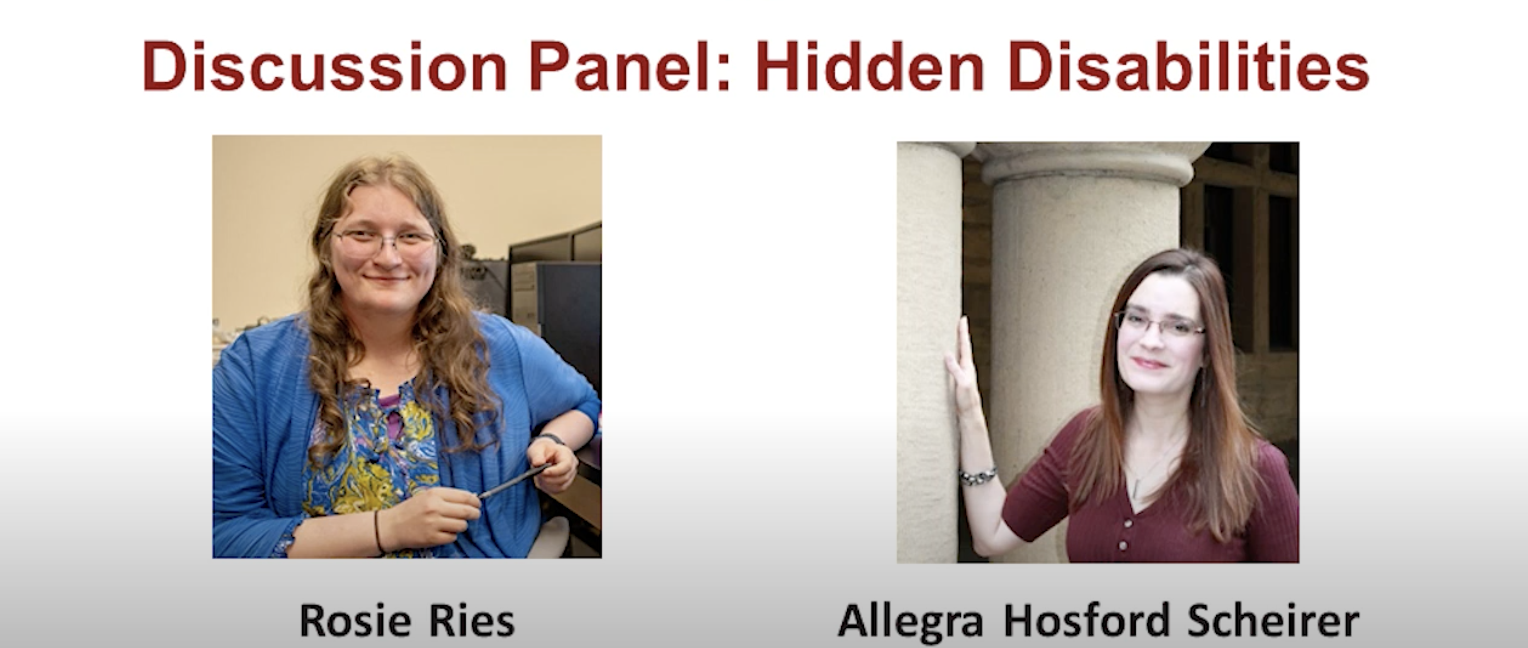When first-year geophysics Ph.D. student Rosie Ries arrived at Stanford, she was worried that her condition would prevent her from fully engaging with the community. At just four months old, she was diagnosed with ocular albinism, a genetic condition that causes vision abnormalities.
While she found her housing and class accommodations to be adequate, Ries lacked a sense of community at Stanford: “I don’t really know any other students with disabilities at Stanford,’’ she said, explaining that she has instead turned to others for immediate and all-encompassing support.
Ries is only one student of many others at the University with hidden disabilities, or disabilities that might not be visually perceived. At a Monday panel, Ries joined others with hidden disabilities in sharing how their lived experiences are easy to ignore — and suggested ways the University could make campus more welcoming for them.
“It’s our reality and if we are going to be members of this Stanford community, we want to make sure that our community accepts us as we are,” said Isabel Carrera, Stanford Earth’s assistant director for Diversity, Equity, and Inclusion who moderated the panel and also has a hidden disability.
The three panelists said the discussion was a step toward allowing University members to become more in tune with the demands of the University’s hidden disabilities population.
The panel was one of a series of events held by Stanford Earth and the Diversity and Access Office to foster spaces where the Stanford community can talk openly and safely about disabilities while also combating the stigma behind such conditions.
Allegra Scheirer, a physical scientist researcher who developed epilepsy as a result of a large brain tumor that was discovered roughly four years ago, said that contrary to Ries’s experience, she has seen an amenable side of Stanford willing to embrace change.
Ries said that at her undergraduate institution, she had access to a supportive student disability group that listened to her struggles — or triumphs — with open ears, a stark contrast to her experience at Stanford.
That group “was a place for people with disabilities to come together and realize that we weren’t alone,” she said. But when she attempted to find a similarly structured community group at Stanford, she said that her search was unsuccessful.
Scheirer, on the other hand, said that the University was flexible after she raised disability access concerns when the updated Stanford Earth website was launched. “When the Stanford Earth beautiful new website debuted, there was motion on there, [which] was too much for my brain to handle,” Scheirer said.
She contacted Aaron Cole, director of web application services for Stanford Earth, who, “within hours, created a function that would make the motion stop.” Unable to handle excessive movement because of her condition, Scheirer was relieved when she was presented with an escape-key function that could restrict the commotion present on the site she uses for educational purposes.
“Those little things can make my work life so much easier,” Scheirer said.
The panel switched gears and discussed ways in which the community at large could make those with hidden disabilities feel more welcome. Participants shared different resources that they had gathered during their time at Stanford, including a link to on-campus student groups.
Ries also suggested other ways in which the community can help create a more inclusive environment.
“If people do some of the small things without being asked, it makes you feel like you belong,” Ries said. Creating announcement posters with larger fonts, she said, is one way to make resources more accessible for everyone. Scheirer suggested that others presenting to large crowds not move their cursors too often.
Carrera urged those who attended the panel to continue the conversation and make strides toward inclusive spaces at Stanford.
“This doesn’t define me. It is one of the multiple identities that I have,” Carrera said. “This is who we are. There is no other Rosie, no other Allegra, no other Isabel.”
The Office of Accessible Education and the Stanford Critical Law Society have organized an event set for next month to build on the intercommunity discussion sparked by the panel.
